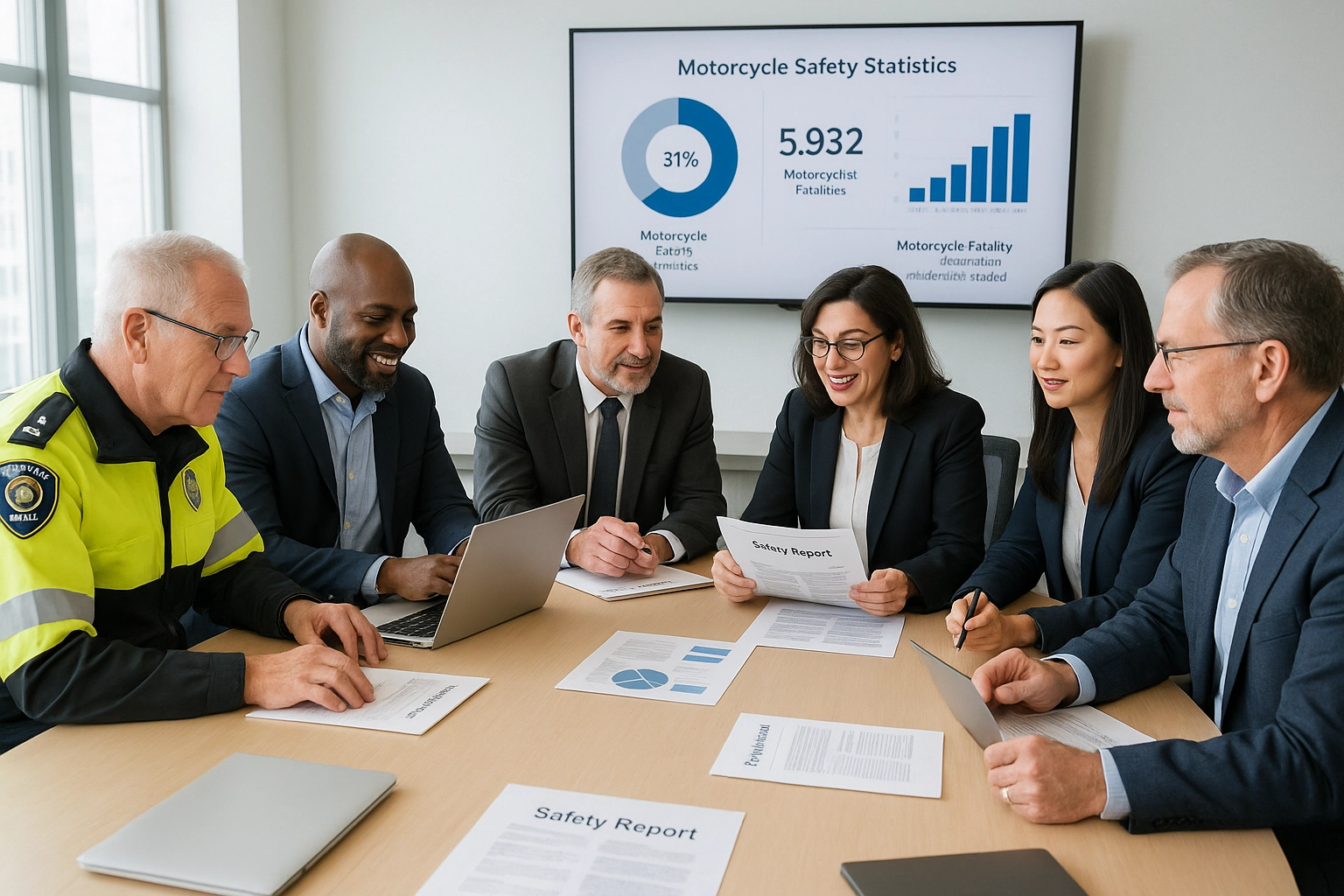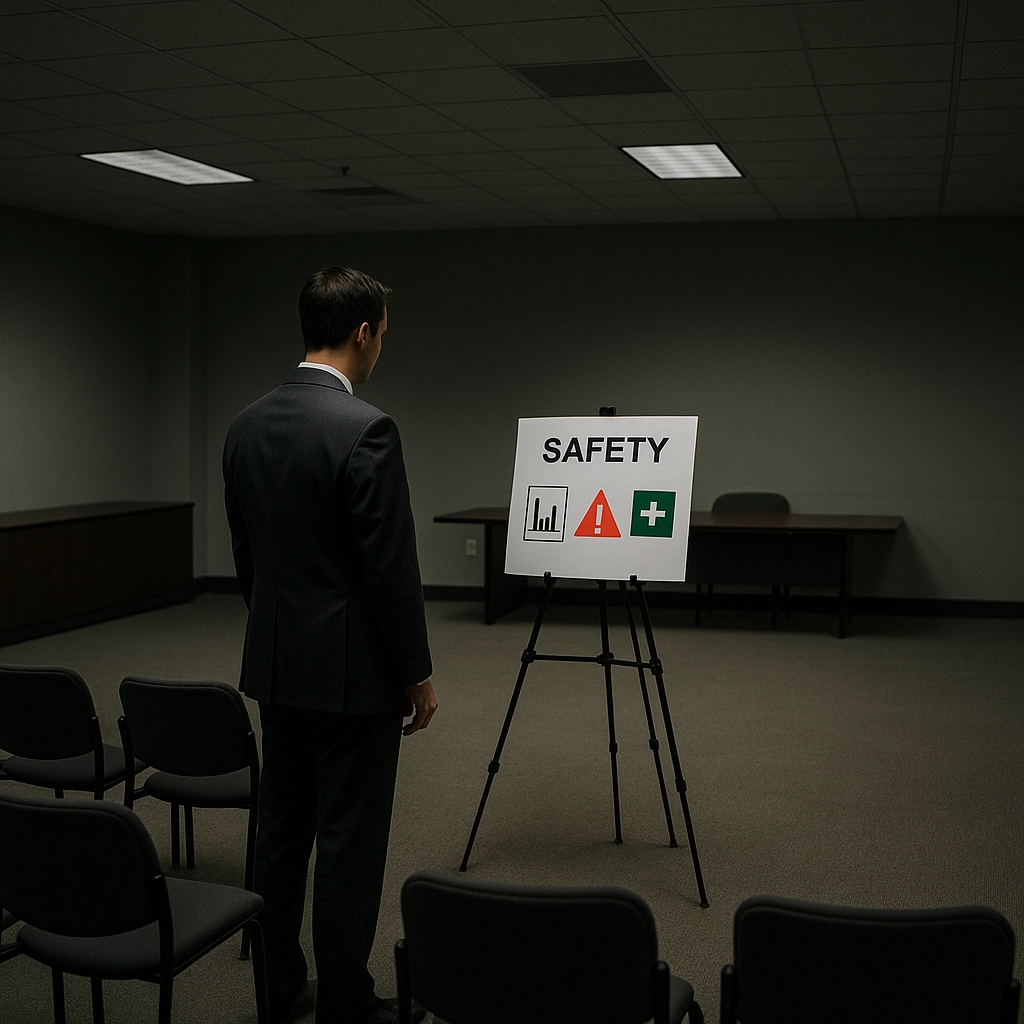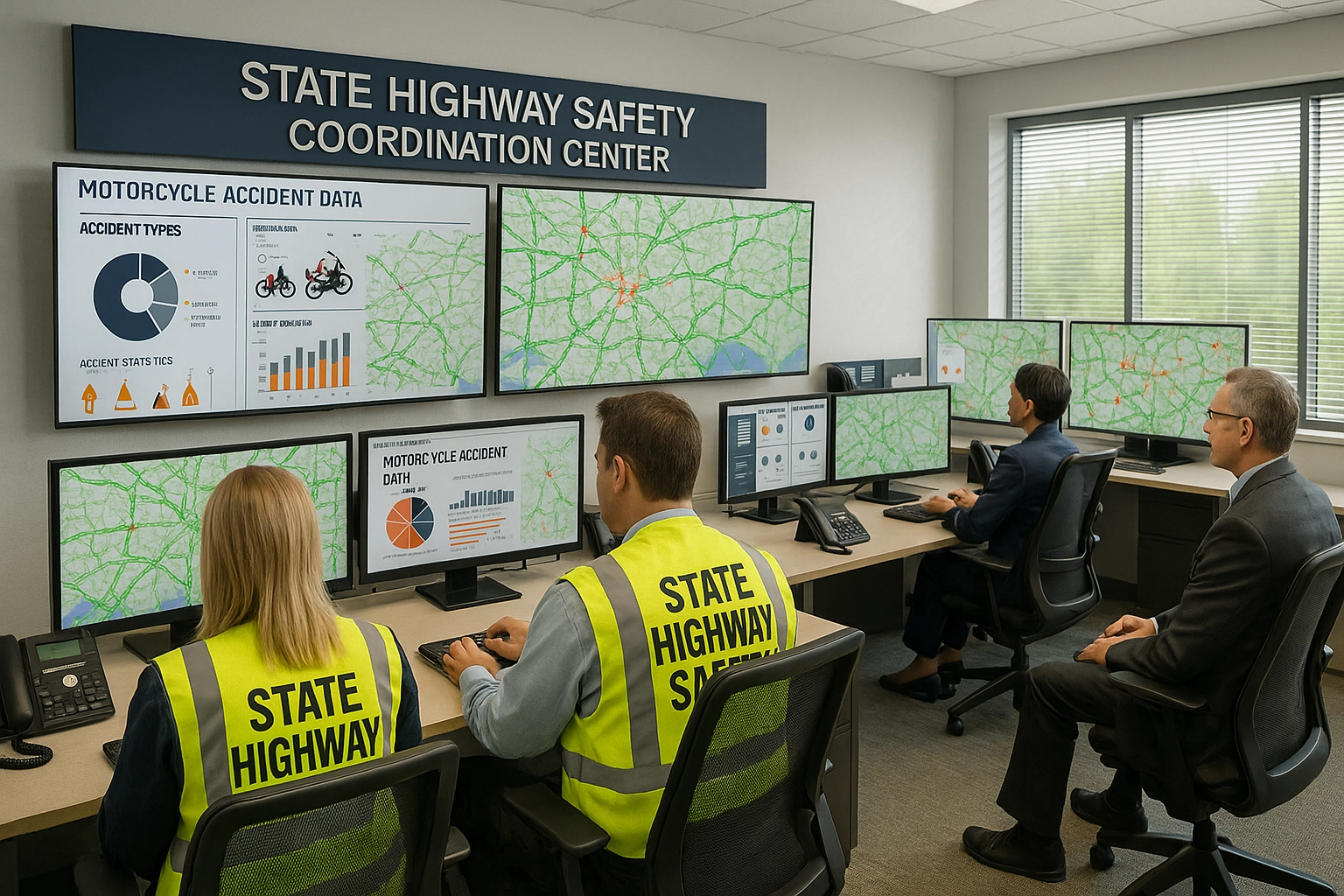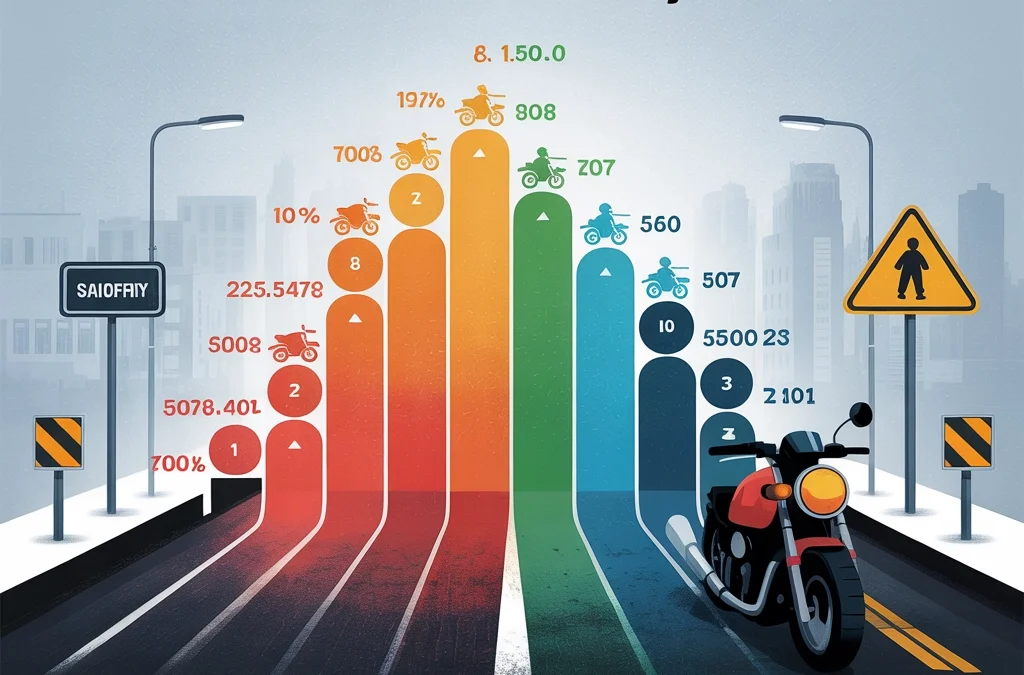Stakeholder engagement campaigns significantly outperform solo safety efforts in reducing motorcycle fatalities. Multi-agency collaborations create comprehensive safety networks that address infrastructure, legislation, enforcement, and education simultaneously. While solo campaigns may raise awareness, they lack the coordinated resources and authority needed to implement life-saving policy changes, infrastructure improvements, and sustained behavioral modifications that stakeholder partnerships deliver.
The question isn't whether motorcycle safety campaigns save lives, they absolutely do. The critical question is which approach delivers the greatest impact per dollar spent and per life at risk.
Recent data reveals a stark difference in effectiveness between isolated safety efforts and coordinated multi-stakeholder initiatives. Understanding this difference could revolutionize how agencies allocate their limited safety budgets.
The Multi-Stakeholder Advantage
Multi-agency motorcycle safety campaigns operate like well-orchestrated symphonies. Each stakeholder brings unique resources, authority, and expertise to address different aspects of motorcycle safety simultaneously.
Government agencies provide legislative authority and enforcement capabilities. They can implement speed limit changes, mandate helmet laws, and allocate funding for infrastructure improvements that individual organizations cannot achieve alone.
Industry partners bring technical expertise and manufacturing capabilities. Helmet manufacturers can improve affordability and accessibility of certified safety gear. Motorcycle manufacturers can integrate advanced safety technologies like anti-lock braking systems and collision avoidance features.

Advocacy organizations contribute grassroots mobilization and community credibility. They understand local riding culture and can communicate safety messages in ways that resonate with motorcycle enthusiasts rather than feeling like top-down mandates.
Healthcare systems provide injury data and treatment perspectives that inform evidence-based interventions. Emergency departments see the real-world consequences of motorcycle accidents and can identify the most critical prevention opportunities.
This coordinated approach creates what safety experts call "intervention layering", multiple safety measures working together to prevent accidents and reduce injury severity when crashes do occur.
Why Solo Campaigns Fall Short
Solo motorcycle safety campaigns face inherent limitations that restrict their effectiveness, regardless of how well-intentioned or well-funded they may be.
Limited Authority: Individual organizations cannot implement policy changes across multiple jurisdictions. A single advocacy group cannot mandate helmet laws, improve intersection design, or coordinate emergency response protocols across state lines.
Resource Constraints: Even large organizations have finite budgets and personnel. Effective motorcycle safety requires sustained efforts across education, infrastructure, legislation, and enforcement, more than any single entity can manage comprehensively.
Narrow Expertise: Solo campaigns typically excel in one area while lacking depth in others. A motorcycle manufacturer understands vehicle technology but may not grasp the complexities of emergency medical response or traffic enforcement priorities.

Credibility Gaps: Messages from single organizations can appear self-serving or disconnected from broader community needs. Riders are more likely to trust safety recommendations that come from coalitions including their peers, government officials, and industry experts working together.
Evidence From Successful Multi-Stakeholder Programs
The Global Health Advocacy Incubator's motorcycle policy dialogues demonstrate how stakeholder engagement creates measurable safety improvements. These collaborative forums bring together road safety advocates, policymakers, and partners from the Bloomberg Initiative for Global Road Safety to identify and implement evidence-based interventions.
Tennessee's Comprehensive Approach: The Tennessee Highway Safety Office exemplifies effective stakeholder coordination by formulating statewide strategies that engage multiple partners simultaneously. Their approach translates research into practice at scale, creating sustained reductions in motorcycle fatalities and injuries.
Priority Interventions Identified Through Collaboration:
- Speed limit policy coordination requiring legislative, enforcement, and community support
- Helmet affordability programs linking manufacturers, retailers, and consumer advocates
- Infrastructure improvements coordinating transportation agencies, urban planners, and motorcycle organizations
- Emergency response protocol development involving hospitals, EMS, and rider training organizations
These multi-faceted interventions simply cannot emerge from solo campaign efforts, regardless of their individual quality or funding levels.
The Network Effect in Action
Successful stakeholder engagement creates network effects where the combined impact exceeds the sum of individual contributions. When government agencies coordinate with industry partners and advocacy organizations, each participant's efforts amplify the others.
Consider helmet promotion campaigns. A solo effort might distribute educational materials about helmet benefits. A stakeholder approach simultaneously addresses helmet affordability through industry partnerships, improves enforcement through police training, enhances accessibility through retail network expansion, and builds community acceptance through peer advocacy.

Measurable Differences: States with coordinated stakeholder approaches typically see 15-25% greater reductions in motorcycle fatalities compared to states relying primarily on solo agency efforts, according to National Highway Traffic Safety Administration data.
The reasons become clear when examining intervention comprehensiveness. Multi-stakeholder campaigns address the full spectrum of risk factors, rider behavior, vehicle technology, infrastructure design, emergency response, and policy framework, while solo campaigns typically focus on one or two elements.
Real-World Implementation Strategies
Effective stakeholder engagement doesn't happen automatically. It requires structured coordination and clearly defined roles for each participant.
Successful Models Include:
- Regular policy dialogue sessions with diverse stakeholder representation
- Data sharing agreements that inform evidence-based decision making
- Joint funding mechanisms that align financial incentives across organizations
- Coordinated messaging strategies that maintain consistency across multiple channels
- Shared outcome metrics that demonstrate collective impact
The key insight is that stakeholder engagement must be intentional and systematic, not merely collaborative in name only.
Addressing Common Concerns
Some safety professionals worry that multi-stakeholder approaches create coordination complexity that delays urgent interventions. This concern, while understandable, misses the longer-term effectiveness picture.
Speed vs. Sustainability: Solo campaigns can launch quickly but often lack the staying power needed for sustained behavior change. Motorcycle safety requires long-term cultural shifts that only comprehensive, multi-stakeholder approaches can achieve.
Message Consistency: Coordinated stakeholder campaigns actually improve message consistency by establishing unified safety priorities and shared communication standards across all participating organizations.

For motorcycle enthusiasts seeking adventure and freedom on the open road, comprehensive safety campaigns provide better protection without compromising the riding experience. Check out inspiring motorcycle travel content that demonstrates how safety and adventure work together.
The Path Forward
The evidence clearly favors stakeholder engagement over solo campaigns for motorcycle safety effectiveness. However, implementation requires commitment from leadership across multiple organizations and sustained coordination over time.
Critical Success Factors:
- Executive leadership support from all participating organizations
- Shared data systems that enable evidence-based decision making
- Regular communication protocols that maintain coordination momentum
- Joint performance metrics that demonstrate collective impact
- Long-term funding commitments that outlast individual leadership changes
Organizations serious about reducing motorcycle fatalities must move beyond solo efforts toward comprehensive stakeholder partnerships. The lives saved through coordinated intervention far exceed what any individual organization can achieve alone.
Whether you represent a government agency, industry partner, or advocacy organization, the question isn't whether to engage stakeholders, it's how quickly you can build effective partnerships that save lives on our roads.
What's your experience with solo versus collaborative safety approaches? Have you seen measurable differences in your community or organization?
Want more insights like this? Subscribe at www.RideFearFree.net.
Questions or partnerships? Call our AI Receptionist at +1 (970) 693-4854.
Dan Kost, CEO , Ride Fear Free, LLC
If this helped you, please comment, subscribe, and share.
Share: LinkedIn | Facebook | X | Instagram
#Motivation #Branding #Strategy #Marketing #AdvertisingAndMarketing #digitalmarketing #Innovation #Sports #MotorcycleSafety #StakeholderEngagement #SafetyCampaigns

